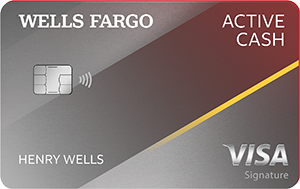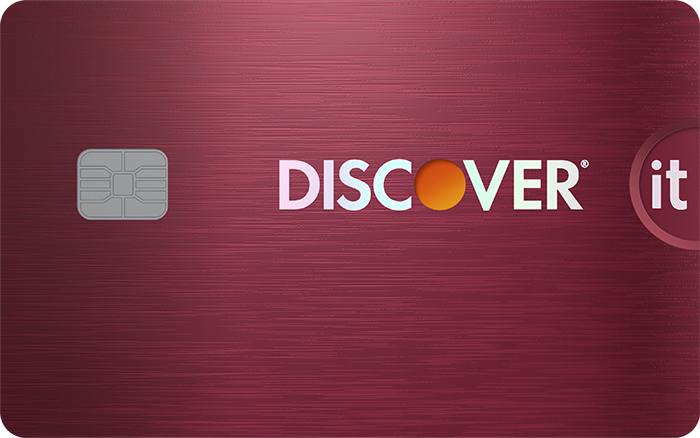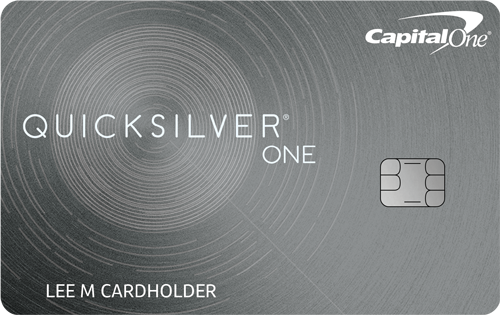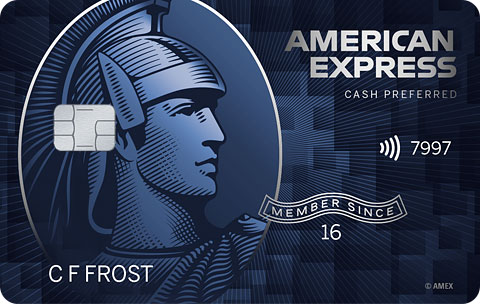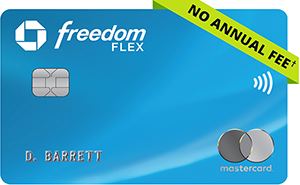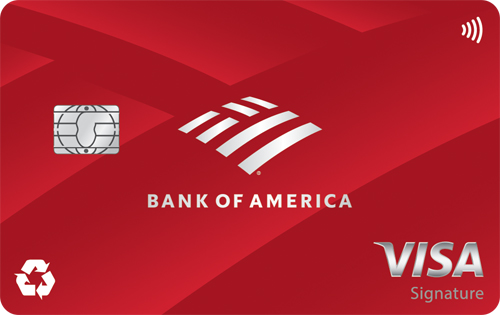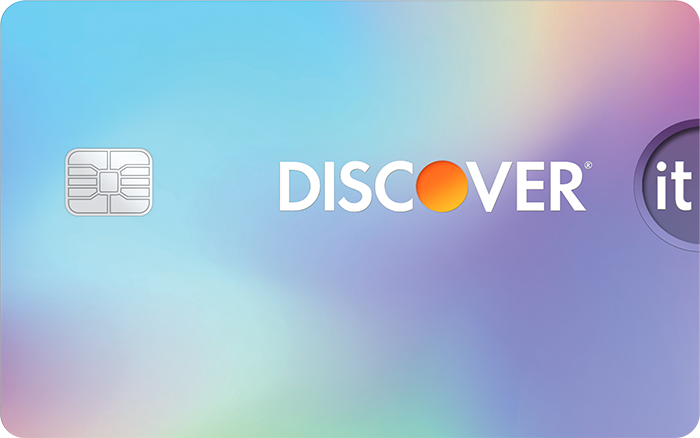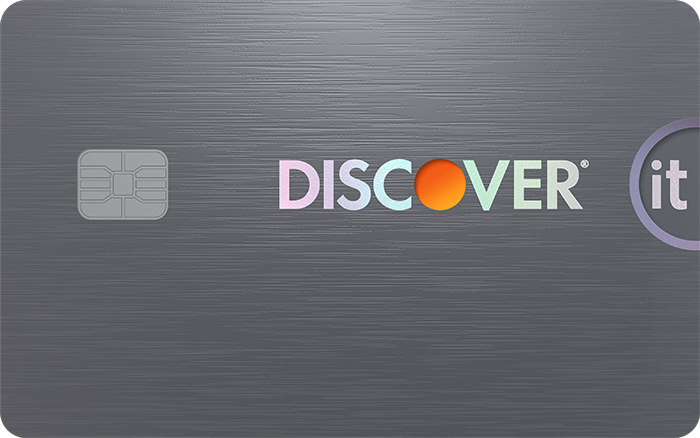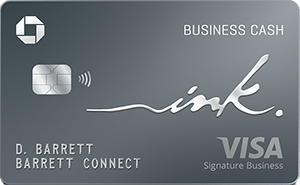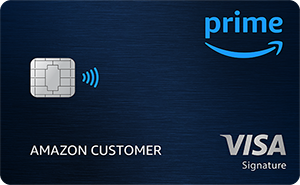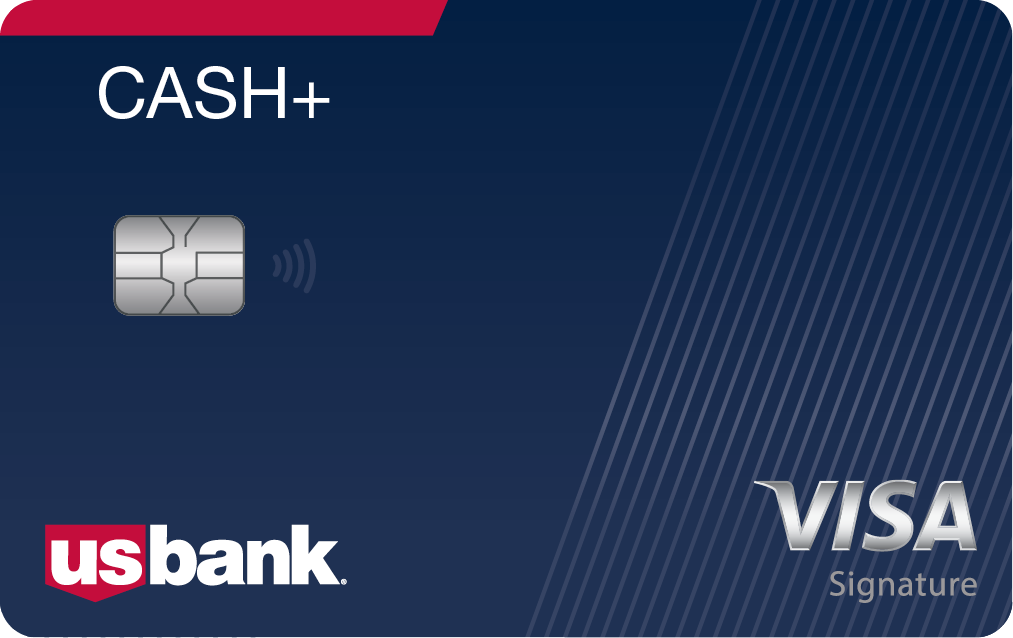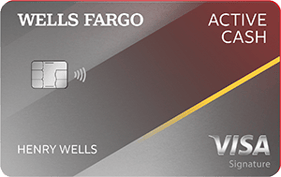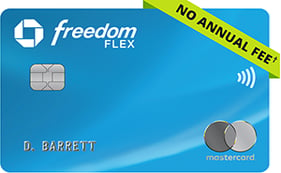-
Our picks, your power: card companies can’t buy their way onto our list
The Motley Fool Ascent:
- Has expertly reviewed and rated over 260 credit cards
- Applies a five-star scale to grade cards, using criteria that are most important for the average user (think: fees, interest, rewards, perks)
- Is backed by 30 years of trusted financial guidance from The Motley Fool
- Provides a full breakdown of our methodology in rating specific card types
Cash back credit cards let you save cash faster by giving you a certain percentage of money back (often between 1%-6%) on your purchases.
One thing to keep in mind when researching -- we aren't paid to list the cards below. Many of these cash back cards are used by our very own team and that's why we are confident in recommending them to you.
Simplify your search for the best cash back credit card
Here are cards that target different needs.
- Our pick for flexibility in cash back categories: Bank of America® Customized Cash Rewards credit card
- Our pick for cash back credit card with no annual fee: Discover it® Cash Back (see rates and fees)
- Our favorite for simple flat-rate cash back: Wells Fargo Active Cash® Card (see rates and fees)
- Flat rate cash back: Wells Fargo Active Cash® Card
- No annual fee: Discover it® Cash Back
- Fair credit: Capital One QuicksilverOne Cash Rewards Credit Card
- U.S. supermarkets and U.S. gas: Blue Cash Preferred® Card from American Express
- Rotating bonus categories: Chase Freedom Flex℠
- Cash back of your choice: Bank of America® Customized Cash Rewards credit card
- 2% cash back: Citi Double Cash® Card
- Students: Discover it® Student Cash Back
- Bad credit: Discover it® Secured Credit Card
- Business owners: Ink Business Cash® Credit Card
- Amazon and Whole Foods: Prime Visa
- Cash back versatility: U.S. Bank Cash+® Visa Signature® Card
- First-time card users: Bread Cashback™ American Express® Credit Card
Great for: Flat rate cash back
Good/Excellent (670-850)
Intro APR 0% intro APR for 15 months from account opening on purchases and qualifying balance transfers
Purchases: 0% intro APR, 15 months from account opening
Balance Transfers: 0% intro APR, 15 months from account opening on qualifying balance transfers
Regular APR
20.24%, 25.24%, or 29.99% Variable APR
Rewards Earn unlimited 2% cash rewards on purchases.
2% cash rewards
Annual Fee N/A
$0
Welcome Offer Earn a $200 cash rewards bonus after spending $500 in purchases in the first 3 months.
$200 cash rewards
-
This card’s unlimited 2% cash rewards on purchases is the highest we’ve seen for a flat-rate rewards card with no annual fee. It also has an incredibly easy-to-earn $200 welcome bonus and a generous intro APR offer. We simply haven’t come across this combination of top perks in one card before. Read Full Review
-
- Unlimited 2% cash rewards
- Long 0% intro APR offer
- Generous cash rewards welcome bonus
- No annual fee
- Cellphone protections
- Card perks
- Free FICO® Score updates
- No bonus categories
- Foreign transaction fees
- Balance transfer fee
-
- Select “Apply Now” to take advantage of this specific offer and learn more about product features, terms and conditions.
- Earn a $200 cash rewards bonus after spending $500 in purchases in the first 3 months.
- Earn unlimited 2% cash rewards on purchases.
- 0% intro APR for 15 months from account opening on purchases and qualifying balance transfers. 20.24%, 25.24%, or 29.99% Variable APR thereafter; balance transfers made within 120 days qualify for the intro rate and fee of 3% then a BT fee of up to 5%, min: $5.
- $0 annual fee.
- No categories to track or remember and cash rewards don’t expire as long as your account remains open.
- Find tickets to top sports and entertainment events, book travel, make dinner reservations and more with your complimentary 24/7 Visa Signature® Concierge.
- Up to $600 of cell phone protection against damage or theft. Subject to a $25 deductible.
Great for: No annual fee
Good/Excellent (670-850)
Intro APR
Purchases: 0%, 15 months
Balance Transfers: 0%, 15 months
Regular APR
17.24% - 28.24% Variable APR
Rewards Earn 5% cash back on everyday purchases at different places you shop each quarter like grocery stores, restaurants, gas stations, and more, up to the quarterly maximum when you activate. Plus, earn unlimited 1% cash back on all other purchases—automatically.
1% - 5% Cashback
Annual Fee
$0
Welcome Offer N/A
Discover will match all the cash back you’ve earned at the end of your first year.
-
We think this card has among the highest cash back potential for cards with no annual fee. The key is the Unlimited Cashback Match — Discover automatically matches all the cash back new cardholders have earned at the end of the first year. That cash back can seriously add up when you earn 5% cash back on rotating bonus categories (when you activate them, up to the quarterly maximum) and 1% on other purchases. Read Full Review
-
- Rotating bonus categories
- Sign-up bonus offer
- Great intro APR offer
- No annual fee
- No foreign transaction fee
- No fixed bonus categories
-
- INTRO OFFER: Unlimited Cashback Match for all new cardmembers – only from Discover. Discover will automatically match all the cash back you’ve earned at the end of your first year! There’s no minimum spending or maximum rewards. You could turn $150 cash back into $300.
- Earn 5% cash back on everyday purchases at different places you shop each quarter like grocery stores, restaurants, gas stations, and more, up to the quarterly maximum when you activate. Plus, earn unlimited 1% cash back on all other purchases—automatically.
- Redeem your rewards for cash at any time.
- Discover could help you reduce exposure of your personal information online by helping you remove it from select people-search sites that could sell your data. It’s free, activate with the mobile app.
- Get a 0% intro APR for 15 months on purchases. Then 17.24% to 28.24% Standard Variable Purchase APR applies, based on credit worthiness.
- No annual fee.
- Terms and conditions apply.
Capital One QuicksilverOne Cash Rewards Credit Card
Great for: Fair credit
On Capital One's Secure Website.
On Capital One's Secure Website.
Fair (300-669)
Intro APR
Purchases: N/A
Balance Transfers: N/A
Regular APR
29.99% (Variable)
Rewards Earn unlimited 1.5% cash back on every purchase, every day. Earn unlimited 5% cash back on hotels and rental cars booked through Capital One Travel, where you'll get Capital One's best prices on thousands of trip options. Terms apply.
1.5%-5% cash back
Annual Fee
$39
Welcome Offer Cash Back
Cash Back
-
Getting 1.5% back on every purchase couldn't be easier — and it makes this Capital One card a standout for those who want to improve their credit with responsible use and still earn rewards. You can even sign up to have your cash back redeemed as a statement credit automatically, saving you money every month. Note that it comes with an annual fee of $39, though. Check out this card to simplify your life. Read Full Review
-
- Solid cash back rate
- No foreign transaction fee
- Flexible credit score requirements
- Annual fee
- No sign-up bonus
- No intro APR offer
-
- Earn unlimited 1.5% cash back on every purchase, every day
- No rotating categories or limits to how much you can earn, and cash back doesn't expire for the life of the account. It's that simple
- Be automatically considered for a higher credit line in as little as 6 months
- Enjoy peace of mind with $0 Fraud Liability so that you won't be responsible for unauthorized charges
- Help strengthen your credit for the future with responsible card use
- Enjoy up to 6 months of complimentary Uber One membership statement credits through 11/14/2024
- Earn unlimited 5% cash back on hotels and rental cars booked through Capital One Travel, where you'll get Capital One's best prices on thousands of trip options. Terms apply
- Monitor your credit score with CreditWise from Capital One. It's free for everyone
- Check out quickly and securely with a contactless card, without touching a terminal or handing your card to a cashier. Just hover your card over a contactless reader, wait for the confirmation, and you're all set
Blue Cash Preferred® Card from American Express
Great for: U.S. supermarkets and U.S. gas
On American Express' Secure Website.
Terms apply
On American Express' Secure Website.
Terms apply
Good/Excellent (670-850)
Intro APR
Purchases: 0%, 12 months
Balance Transfers: 0%, 12 months
Regular APR
19.24%-29.99% Variable
Rewards 6% Cash Back at U.S. supermarkets on up to $6,000 per year in purchases (then 1%). 6% Cash Back on select U.S. streaming subscriptions. 3% Cash Back at U.S. gas stations. 3% Cash Back on transit (including taxis/rideshare, parking, tolls, trains, buses and more). 1% Cash Back on other purchases. Cash Back is received in the form of Reward Dollars that can be redeemed as a statement credit or at Amazon.com checkout.
1%-6% Cash Back
Annual Fee
$0 intro annual fee for the first year, then $95.
Welcome Offer Earn a $250 statement credit after you spend $3,000 in purchases on your new Card within the first 6 months.
$250
-
This card offers market-leading cash back at U.S. Supermarkets. The welcome bonus and intro APR offer just sweeten the deal. Terms apply. If you spend at least $500 per month on groceries (excluding wholesale clubs and super-stores like Costco and Walmart), this card is worth considering. Read Full Review
-
- Big welcome offer
- U.S. supermarkets rewards
- U.S. gas stations rewards
- Streaming subscription rewards
- Travel and purchase protections
- Annual fee
- Foreign transaction fee
-
- Earn a $250 statement credit after you spend $3,000 in purchases on your new Card within the first 6 months.
- $0 intro annual fee for the first year, then $95.
- Buy Now, Pay Later: Enjoy $0 intro plan fees when you use Plan It® to split up large purchases into monthly installments. Pay $0 intro plan fees on plans created during the first 12 months from the date of account opening. Plans created after that will have a monthly plan fee up to 1.33% of each eligible purchase amount moved into a plan based on the plan duration, the APR that would otherwise apply to the purchase, and other factors.
- Low Intro APR: 0% on purchases and balance transfers for 12 months from the date of account opening. After that, your APR will be a variable APR of 19.24% - 29.99%. Variable APRs will not exceed 29.99%.
- 6% Cash Back at U.S. supermarkets on up to $6,000 per year in purchases (then 1%).
- 6% Cash Back on select U.S. streaming subscriptions.
- 3% Cash Back at U.S. gas stations.
- 3% Cash Back on transit (including taxis/rideshare, parking, tolls, trains, buses and more).
- 1% Cash Back on other purchases.
- Cash Back is received in the form of Reward Dollars that can be redeemed as a statement credit or at Amazon.com checkout.
- Get up to $120 in statement credits annually when you pay for an auto-renewing subscription to Equinox+ at equinoxplus.com with your Blue Cash Preferred® Card. That’s $10 in statement credits each month. Enrollment required.
- Thinking about getting the Disney Bundle which can include Disney+, Hulu, and ESPN+? Your decision made easy with $7/month back in the form of a statement credit after you spend $9.99 or more each month on an eligible subscription (subject to auto renewal) with your Blue Cash Preferred® Card. Enrollment required.
- Terms Apply.
Great for: Rotating bonus categories
On Chase's Secure Website.
On Chase's Secure Website.
Good/Excellent (670-850)
Intro APR 0% Intro APR on Purchases
Purchases: 0% Intro APR on Purchases, 15 months
Balance Transfers: 0% Intro APR on Balance Transfers, 15 months
Regular APR
20.49%-29.24% Variable
Rewards 5% cash back on up to $1,500 in combined purchases in bonus categories each quarter you activate. Enjoy new 5% categories each quarter! Plus, earn 5% cash back on travel purchased through Chase Ultimate Rewards®, 3% on dining and drugstores, and 1% on all other purchases.
5% cash back offer
Annual Fee N/A
$0
Welcome Offer Earn a $200 Bonus after you spend $500 on purchases in your first 3 months from account opening!
$200 bonus
-
This Chase card is one of our favorites, and with good reason. You earn 5% cash back on up to $1,500 in combined purchases in bonus categories each quarter you activate, alongside other standout perks (and at least 1% on all purchases). Plus, this one comes without an annual fee and with a generous welcome bonus. Read Full Review
-
- Big sign-up bonus
- Lucrative cash back program
- Long 0% intro APR
- No annual fee
- Purchase and travel protections
- Foreign transaction fee
-
- Earn a $200 Bonus after you spend $500 on purchases in your first 3 months from account opening.
- 5% cash back on up to $1,500 in combined purchases in bonus categories each quarter you activate. Enjoy new 5% categories each quarter!
- 5% cash back on travel purchased through Chase Ultimate Rewards®, our premier rewards program that lets you redeem rewards for cash back, travel, gift cards and more
- 3% cash back on drugstore purchases and dining at restaurants, including takeout and eligible delivery service, and unlimited 1% cash back on all other purchases.
- No minimum to redeem for cash back. You can choose to receive a statement credit or direct deposit into most U.S. checking and savings accounts. Cash Back rewards do not expire as long as your account is open!
- 0% Intro APR for 15 months from account opening on purchases and balance transfers, then a variable APR of 20.49%-29.24%.
- No annual fee - You won't have to pay an annual fee for all the great features that come with your Freedom Flex℠ card
- Keep tabs on your credit health - Chase Credit Journey helps you monitor your credit with free access to your latest score, real-time alerts, and more.
- Member FDIC
Bank of America® Customized Cash Rewards credit card
Great for: Cash back of your choice
On Bank of America's Secure Website.
On Bank of America's Secure Website.
Good/Excellent (670-850)
Intro APR 0% Intro APR for 15 billing cycles for purchases. 0% Intro APR for 15 billing cycles for any balance transfers made in the first 60 days. After the intro APR offer ends, 18.24% - 28.24% Variable APR on purchases and balance transfers will apply. Balance transfers include a fee of 3% for 60 days from account opening, then 4%.
Purchases: 0% Intro APR for 15 billing cycles for purchases
Balance Transfers: 0% Intro APR for 15 billing cycles for any balance transfers made in the first 60 days
Regular APR
18.24% - 28.24% (Variable)
Rewards 3% cash back in your choice category, 2% at grocery stores & wholesale clubs (up to $2,500 in combined choice category/grocery store/wholesale club quarterly purchases), 1% on all other purchases.
1% - 3% cash back
Annual Fee
$0
Welcome Offer $200 online cash rewards bonus after you make at least $1,000 in purchases in the first 90 days of account opening
$200 cash rewards
-
This card's wide range of extra cash back options speaks for itself, with a choice of six bonus categories you can change monthly for 3% earnings in the category of your choice. And you can earn 2% back automatically at grocery stores and wholesale clubs. No annual fee and a nice welcome bonus also make this one a winner. Plus, if you're a Bank of America Preferred Rewards member, this card will be even more valuable for you. Read Full Review
-
- Competitive welcome bonus
- Bonus cash back in a category of your choice
- No annual fee
- Great 0% intro & transfer APR offer
- Relationship rewards bonus
- Foreign transaction fee
- Limit on bonus cash back
-
- $200 online cash rewards bonus after you make at least $1,000 in purchases in the first 90 days of account opening.
- Earn 3% cash back in the category of your choice, automatic 2% at grocery stores and wholesale clubs (up to $2,500 in combined choice category/grocery store/wholesale club quarterly purchases) and unlimited 1% on all other purchases.
- Choose 3% cash back on gas and EV charging station, online shopping/cable/internet/phone plan/streaming, dining, travel, drug store/pharmacy or home improvement/furnishing purchases.
- If you're a Bank of America Preferred Rewards® member, you can earn 25%-75% more cash back on every purchase. That means you could earn 3.75%-5.25% cash back on purchases in your choice category.
- No annual fee and cash rewards don’t expire as long as your account remains open.
- 0% Intro APR for 15 billing cycles for purchases, and for any balance transfers made in the first 60 days. After the Intro APR offer ends, a Variable APR that’s currently 18.24% - 28.24% will apply. A 3% Intro balance transfer fee will apply for the first 60 days your account is open. After the Intro balance transfer fee offer ends, the fee for future balance transfers is 4%.
- Contactless Cards - The security of a chip card, with the convenience of a tap.
- This online only offer may not be available if you leave this page or if you visit a Bank of America financial center. You can take advantage of this offer when you apply now.
Great for: 2% cash back
Fair to Excellent (580-850)
Intro APR N/A
Purchases: N/A
Balance Transfers: 0%, 18 months
Regular APR
19.24% - 29.24% (Variable)
Rewards 2% cash back: 1% when you buy plus 1% as you pay
Up to 2% cash back
Annual Fee
$0
Welcome Offer Earn $200 cash back after you spend $1,500 on purchases in the first 6 months of account opening. This bonus offer will be fulfilled as 20,000 ThankYou® Points, which can be redeemed for $200 cash back.
20,000 ThankYou® Points
-
This card combines a top-notch balance transfer offer for 18 months with best-in-class unlimited 2% cash back on purchases. There's no introductory APR for purchases, so if you use that long balance transfer offer you'll be charged interest on all new purchases until the full balance is paid off. However, once you conquer that balance transfer, this may become your go-to card thanks to the high cash back rate. Read Full Review
-
- High cash back
- 0% intro APR balance transfer offer
- No annual fee
- Free credit score monitoring
- Foreign transaction fee
- No 0% intro APR on purchases
- No sign-up bonus
-
- Earn $200 cash back after you spend $1,500 on purchases in the first 6 months of account opening. This bonus offer will be fulfilled as 20,000 ThankYou® Points, which can be redeemed for $200 cash back.
- Earn 2% on every purchase with unlimited 1% cash back when you buy, plus an additional 1% as you pay for those purchases. To earn cash back, pay at least the minimum due on time.
Plus, for a limited time, earn 5% total cash back on hotel, car rentals and attractions booked on the Citi Travel℠ portal through 12/31/24. - Balance Transfer Only Offer: 0% intro APR on Balance Transfers for 18 months. After that, the variable APR will be 19.24% - 29.24%, based on your creditworthiness.
- Balance Transfers do not earn cash back. Intro APR does not apply to purchases.
- If you transfer a balance, interest will be charged on your purchases unless you pay your entire balance (including balance transfers) by the due date each month.
- There is an intro balance transfer fee of 3% of each transfer (minimum $5) completed within the first 4 months of account opening. After that, your fee will be 5% of each transfer (minimum $5).
Discover it® Student Cash Back
Great for: Students
Fair/New to Credit Under(669)
Intro APR
Purchases: 0%, 6 months
Balance Transfers: 10.99%, 6 months
Regular APR
18.24% - 27.24% Variable APR
Rewards 5% cash back at different places each quarter up to the quarterly maximum when you activate. 1% unlimited cash back on all other purchases - automatically
1% - 5% Cashback
Annual Fee
$0
Welcome Offer N/A
Discover will match all the cash back you’ve earned at the end of your first year.
-
Student credit cards are sometimes light on perks, but this Discover one might surprise you. You can earn 5% cash back on up to $1,500 of spending in rotating bonus categories -- just opt in every quarter. And earning 1% back on other purchases plus an innovative Unlimited Cashback Match welcome bonus makes this one worth considering for college students. Read Full Review
-
- Rotating bonus categories
- Valuable sign-up bonus offer
- Good for avoiding fees
- Credit score monitoring
- Highly rated customer service
- No fixed bonus categories
-
- INTRO OFFER: Unlimited Cashback Match for all new cardmembers – only from Discover. Discover will automatically match all the cash back you’ve earned at the end of your first year! So you could turn $50 cash back into $100. Or turn $100 cash back into $200. There’s no minimum spending or maximum rewards. Just a dollar-for-dollar match.
- Earn 5% cash back on everyday purchases at different places you shop each quarter like grocery stores, restaurants, gas stations, and more, up to the quarterly maximum when you activate. Plus, earn unlimited 1% cash back on all other purchases—automatically.
- Redeem your rewards for cash at any time.
- No credit score required to apply.
- Discover could help you reduce exposure of your personal information online by helping you remove it from select people-search sites that could sell your data. It’s free, activate with the mobile app.
- No annual fee and build your credit with responsible use.
- 0% intro APR on purchases for 6 months, then the standard variable purchase APR of 18.24% - 27.24% applies.
- Terms and conditions apply.
Discover it® Secured Credit Card
Great for: Bad credit
New/Rebuilding Under(579)
Intro APR
Purchases: n/a
Balance Transfers: 10.99%, 6 months
Regular APR
28.24% Variable APR
Rewards 2% cash back at Gas Stations and Restaurants on up to $1,000 in combined purchases each quarter. 1% unlimited cash back on all other purchases - automatically
1% - 2% Cashback
Annual Fee
$0
Welcome Offer
Discover will match all the cash back you’ve earned at the end of your first year.
-
We think this card has among the highest cash back potential for a secured card with no annual fee. The key is the Unlimited Cashback Match — Discover automatically matches the cash back new cardholders earn at the end of the first year. This card could be perfect for you if you're new to credit, or rebuilding after past troubles. Read Full Review
-
- Cash back rewards
- Great sign-up bonus offer
- No annual fee
- Can graduate to an unsecured card
- Minimum deposit amount
-
- No credit score required to apply.
- No Annual Fee, earn cash back, and build your credit history.
- Your secured credit card requires a refundable security deposit, and your credit line will equal your deposit amount, starting at $200. Bank information must be provided when submitting your deposit.
- Automatic reviews starting at 7 months to see if we can transition you to an unsecured line of credit and return your deposit.
- Earn 2% cash back at Gas Stations and Restaurants on up to $1,000 in combined purchases each quarter, automatically. Plus earn unlimited 1% cash back on all other purchases.
- Discover could help you reduce exposure of your personal information online by helping you remove it from select people-search sites that could sell your data. It’s free, activate with the mobile app.
- Get an alert if we find your Social Security number on any of thousands of Dark Web sites. Activate for free.
- Terms and conditions apply.
Ink Business Cash® Credit Card
Great for: Business owners
On Chase's Secure Website.
On Chase's Secure Website.
Good/Excellent (670-850)
Intro APR 0% Intro APR on Purchases
Purchases: 0% Intro APR on Purchases, 12 months
Balance Transfers: N/A
Regular APR
18.49% - 24.49% Variable
Rewards Earn 5% cash back on the first $25,000 spent in combined purchases at office supply stores and on internet, cable and phone services each account anniversary year. Earn 2% cash back on the first $25,000 spent in combined purchases at gas stations and restaurants each account anniversary year. Earn 1% cash back on all other card purchases with no limit to the amount you can earn.
Earn 5% cash back in select business categories
Annual Fee N/A
$0
Welcome Offer Earn $350 when you spend $3,000 on purchases in the first three months and an additional $400 when you spend $6,000 on purchases in the first six months after account opening.
Earn up to $750 bonus cash back
-
A card with no annual fee and a 5% cash back rate on common spending categories for a savvy business owner? Chase delivers -- and you can even earn a particularly generous welcome bonus and enjoy travel and purchase protections with this card. Read Full Review
-
- Big cash back sign-up bonus
- Office supply store rewards
- Internet, cable, and phone service rewards
- 0% intro APR offer
- No annual fee
- Low caps on bonus categories
- No balance transfer offer
- Foreign transaction fee
-
- Earn $350 when you spend $3,000 on purchases in the first three months and an additional $400 when you spend $6,000 on purchases in the first six months after account opening
- Earn 5% cash back on the first $25,000 spent in combined purchases at office supply stores and on internet, cable and phone services each account anniversary year
- Earn 2% cash back on the first $25,000 spent in combined purchases at gas stations and restaurants each account anniversary year. Earn 1% cash back on all other purchases
- 10% Business Relationship Bonus If you have the Ink Business Cash card plus a Chase Business Checking account on your first card anniversary
- With Zero Liability you won't be held responsible for unauthorized charges made with your card or account information.
- No Annual Fee
- Redeem rewards for cash back, gift cards, travel and more through Chase Ultimate Rewards®.
- 0% introductory APR for 12 months on purchases
- Member FDIC
Great for: Amazon and Whole Foods
On Chase's Secure Website.
On Chase's Secure Website.
Good/Excellent (670-850)
Intro APR
Purchases: N/A
Balance Transfers: N/A
Regular APR
19.49% - 27.49%, variable
Rewards Earn unlimited 5% back at Amazon.com, Amazon Fresh, Whole Foods Market, and on Chase Travel purchases with an eligible Prime membership, unlimited 2% back at gas stations, restaurants, and on local transit and commuting (including rideshare), and unlimited 1% on all other purchases
1% - 5% back
Annual Fee
$0
Welcome Offer Get a $100 Amazon Gift Card instantly upon approval exclusively for Prime members
Get a $100 Amazon Gift Card
-
If you have an Amazon Prime account, do we have the card for you! This one is part of Chase's lineup, and earns a whopping 5% cash rewards on Amazon, Whole Foods, and Amazon Fresh purchases. Best of all, that cash back is available to you as soon as the next day -- so if you make frequent Amazon purchases and have a Prime membership, you'll easily save. Read Full Review
-
- Big Amazon and Whole Foods rewards
- Instant Amazon gift card
- No annual fee
- Consumer and travel protections
- No 0% intro APR offer
- Requires Prime membership
-
- Get a $100 Amazon Gift Card instantly upon approval exclusively for Prime members
- Earn unlimited 5% back at Amazon.com, Amazon Fresh, and Whole Foods Market with an eligible Prime membership
- Earn unlimited 5% back on Chase Travel purchases with an eligible Prime membership
- Earn unlimited 2% back at gas stations, restaurants, and on local transit and commuting (including rideshare)
- Earn unlimited 1% back on all other purchases
- No annual credit card fee
- No more waiting. Redeem daily rewards at Amazon.com as soon as the next day
- Member FDIC
U.S. Bank Cash+® Visa Signature® Card
Great for: Cash back versatility
Good/Excellent (670-850)
Intro APR 0% on purchases and balance transfers for the first 15 billing cycles on purchases billing cycles, and after that 19.49% - 29.74% (Variable).
Purchases: 0%, 15 billing cycles on purchases
Balance Transfers: 0%, 15 billing cycles
Regular APR
19.49% - 29.74% (Variable)
Rewards 5% cash back back on up to $2,000 of quarterly spending in two categories of choice and for travel booked directly in U.S. Bank's Rewards Travel Center, unlimited 2% back in one "everyday" category of choice, 1% back on other purchases
1% - 5% back
Annual Fee
$0
Welcome Offer Earn a $200 bonus after spending $1,000 in eligible purchases within the first 120 days of account opening.
$200
-
You get the power to choose not one, but two bonus 5% cash back categories every quarter with this U.S. Bank card. Plus, you get 5% on travel spending when you book through U.S. Bank. No annual fee, a generous welcome bonus, and 15 billing cycles of 0% APR on purchases and balance transfers round out the perks on this card.
-
- Sign-up bonus
- Bonus categories of your choosing
- No annual fee
- 0% intro APR offer
- Lackluster 5% back categories
- Cash back redemption minimum
- Foreign transaction fee
-
- $200 rewards bonus after spending $1,000 in eligible purchases within the first 120 days of account opening.
- 5% cash back on your first $2,000 in combined eligible purchases each quarter on two categories you choose
- 5% cash back on prepaid air, hotel and car reservations booked directly in the Rewards Center
- 2% cash back on one everyday category, like Gas Stations and EV Charging Stations, Grocery Stores or Restaurants
- 1% cash back on all other eligible purchases
- 0% Intro APR on purchases and balance transfers for the first 15 billing cycles. After that, a variable APR currently 19.49% - 29.74%
- No Annual Fee
- Terms and conditions apply.
Bread Cashback™ American Express® Credit Card
Great for: First-time card users
Good (670-850)
Intro APR
Purchases: N/A
Balance Transfers: N/A
Regular APR
20.74%-35.24% (Variable)
Rewards
2% unlimited cash back on purchases
Annual Fee
$0
Welcome Offer N/A
N/A
-
If you're new to credit cards and don't want to juggle a complicated rewards program, you’ll want to give this Amex a look. It gives you 2% cash back across all purchases (terms apply), and has no foreign transaction fee or annual fee (see rates and fees). Without an intro 0% APR offer or welcome bonus, this card might fall flat for some. But you will get access to special perks through Amex partners.
-
- Unlimited 2% cash back on purchases when you use your Card¹
- No annual fee²
- Purchase protection
- Access to American Express benefits³
- No welcome bonus
- No 0% APR
-
- Earn unlimited 2% cash back on purchases when you use the Card¹
- No rewards caps
- No categories to manage
- No annual fee and no foreign transaction fees²
- Amex Offers, travel and dining benefits, and premium protection benefits³
- Learn more for details
What's the highest cash back credit card?
The cards on this list earn between 1% to 6% cash back, but getting the highest cash back card depends on your spending habits.
- Blue Cash Preferred® Card from American Express has one of the highest cash rewards rates we've seen when spending at U.S. supermarkets (terms apply).
- Ink Business Cash® Credit Card is ideal when shopping at office supply stores or if you have your own business.
- U.S. Bank Cash+® Visa Signature® Card can give you the freedom to pick your cash back category of choice.
As you can see, even though it would be great to get high cash rewards every time you spend, that isn't always the case. The rewards you earn are variable and depend on where you shop or what you purchase.
More about our top cash back credit card picks:
Wells Fargo Active Cash® Card
Cardholder ratings: not provided on the Wells Fargo Active Cash® Card page.
Why we picked it: If you're looking for flat rate cash rewards, this card is a great pick. There are no bonus spending categories so you won't earn more if you spend at certain places.
Apply for Wells Fargo Active Cash® Card
Discover it® Cash Back
Cardholder ratings: 4.7 from 33,719 reviews as of 3/12/2024
Why we picked it: We can't think of many cards with a cash back program like this one. Get 5% cash back on rotating quarterly categories when activated (up to the quarterly maximum spend), plus unlimited cash back match at the end of your first year. The mobile app is also easier to use and much more modern looking than competitor apps. Keep track of your cash back bonus balance via Discover's Spend Analyzer. Best of all, you can redeem your rewards right from your phone or tablet.
Apply for Discover it® Cash Back
Capital One QuicksilverOne Cash Rewards Credit Card
Cardholder ratings: 4.6 from 10,210 reviews as of 3/12/2024
Why we picked it: It normally takes good or excellent credit to get approved for a card with a high cash back rate. This Capital One card is a notable exception. It's possible to qualify with a 580 credit score -- many cards that earn similar rates require a credit score of 640 to 670.
Apply for Capital One QuicksilverOne Cash Rewards Credit Card
Blue Cash Preferred® Card from American Express
Cardholder ratings: not provided on the Blue Cash Preferred® Card from American Express page.
Why we picked it: Do you ever find yourself spending hundreds of dollars at the grocery store in hopes to satisfy your family's hungry appetite? If so, this cash back card may be the right pick. This is one of the highest cash back rates we've seen for groceries and streaming.
Apply for Blue Cash Preferred® Card from American Express
Chase Freedom Flex℠
Cardholder ratings: not provided on the Chase Freedom Flex℠ page.
Why we picked it: This Chase card is loaded with bonus categories. It has rotating quarterly bonus categories and fixed bonus categories. Cash back cards normally give you one or the other, but not both.
Bank of America® Customized Cash Rewards credit card
Cardholder ratings: not provided on the Bank of America® Customized Cash Rewards credit card page.
Why we picked it: Earning 3% in a category you choose is a standout perk, especially since the category options are areas where many people spend a large amount. Also, if you keep enough money with Bank of America to get into its Preferred Rewards program, one of the many benefits is a credit card rewards bonus, effectively boosting your card's cash back rate.
Apply for Bank of America® Customized Cash Rewards credit card
Citi Double Cash® Card
Cardholder ratings: 4.5 from 467 reviews as of 3/12/2024
Why we picked it: Rewards look different for this card, as it will show up on your account as "ThankYou points" instead of traditional dollar amounts. This means you'll earn 1 ThankYou point for every $1 spent on purchases. You'll also get an additional ThankYou point for every $1 paid on your balance. All that to say, you'll still get 2% cash back on purchases.
Apply for Citi Double Cash® Card
Discover it® Student Cash Back
Cardholder ratings: 4.8 out of 1,837 reviews as of 3/12/2024
Why we picked it: When you're in college, you probably wouldn't mind saving money where you can, and this student credit card from Discover definitely helps. A 5% cash back rate in quarterly bonus categories (up to the quarterly limit, when you activate) is among the highest we've seen for a student credit. Discover's Cashback Match is also a highly valuable perk only found with Discover credit cards.
Apply for Discover it® Student Cash Back
Discover it® Secured Credit Card
Cardholder ratings: 4.6 from 2,729 reviews as of 3/12/2024
Why we picked it: Discover packs in some rewarding benefits that we usually don't see from secured credit cards, including cash back rewards and a sign-up bonus. It also makes redeeming cash back quick and easy, with multiple redemption options and no minimums.
Apply for Discover it® Secured Credit Card
Ink Business Cash® Credit Card
Cardholder ratings: not provided on the Ink Business Cash® Credit Card page.
Why we picked Ink Business Cash® Credit Card:
You have to spend money to make money, but it will be much easier with this Chase business card. The sign-up bonus of $750 is the largest we've found from a no annual fee credit card. That, and the generous cash back rates, give this card some serious rewards potential.
Apply for Ink Business Cash® Credit Card
Prime Visa
Cardholder ratings: 4.1 from 105,416 global ratings as of 3/12/2024
Why we picked it: It's the ultimate Amazon credit card. The cash back rates at Amazon, AmazonFresh, and Whole Foods are as good as it gets among the card offers we've seen.
U.S. Bank Cash+® Visa Signature® Card
Cardholder ratings: 4.4 from 10,398 reviews as of 3/12/2024
Why we picked it: This U.S. Bank card puts you in control. It offers the highest cash back rate we've found for categories that you choose, and it offers some unique bonus categories that aren't seen often. If your spending habits change, you can make sure your credit card's rewards change, too.
Bread Cashback™ American Express® Credit Card
Cardholder ratings: not provided on the Bread Cashback™ American Express® Credit Card page.
Why we picked it: It earns an unlimited 2% back on purchases and doesn't charge a foreign transaction fee. The cards we've found that match its cash back rate charge a 3% foreign transaction fee, so they're not as useful abroad.
How to compare the best cash back credit cards
As you shop for reward credit cards, there will probably be multiple cards that you like. Before you pick the best credit card with cash back, compare these three important features.
- Cash back rate: This is the most important feature. Higher cash back rates save you more money, especially if you have a high flat rate on purchases or choose bonus categories that match your spending habits.
- Annual fee: Cash back cards with annual fees tend to have higher cash back rates. These higher rates can make up for the annual fee if you spend enough, but you'll need to do the math on the rewards you'll earn to make sure.
- Bonus rewards: Many include an introductory bonus reward, making it an easy way to collect cash back. You could also look for credit cards that give cash back with 0% intro APR offers, free credit score monitoring, or many other perks.
If you're looking for a feature-by-feature comparison our credit card comparison tool can help.
Compare the best cash back credit cards
| Card | Rating | Great For |
|---|---|---|
|
Rating image, 5.00 out of 5 stars.
5.00/5
Our ratings are based on a 5 star scale.
5 stars equals Best.
4 stars equals Excellent.
3 stars equals Good.
2 stars equals Fair.
1 star equals Poor.
We want your money to work harder for you. Which is why our ratings are biased toward offers that deliver versatility while cutting out-of-pocket costs.
|
Great For: Flat rate cash back |
|
|
|
Rating image, 5.00 out of 5 stars.
5.00/5
Our ratings are based on a 5 star scale.
5 stars equals Best.
4 stars equals Excellent.
3 stars equals Good.
2 stars equals Fair.
1 star equals Poor.
We want your money to work harder for you. Which is why our ratings are biased toward offers that deliver versatility while cutting out-of-pocket costs.
|
Great For: No annual fee |
|
Rating image, 4.00 out of 5 stars.
4.00/5
Our ratings are based on a 5 star scale.
5 stars equals Best.
4 stars equals Excellent.
3 stars equals Good.
2 stars equals Fair.
1 star equals Poor.
We want your money to work harder for you. Which is why our ratings are biased toward offers that deliver versatility while cutting out-of-pocket costs.
|
Great For: Fair credit |
|
|
|
Rating image, 4.50 out of 5 stars.
4.50/5
Our ratings are based on a 5 star scale.
5 stars equals Best.
4 stars equals Excellent.
3 stars equals Good.
2 stars equals Fair.
1 star equals Poor.
We want your money to work harder for you. Which is why our ratings are biased toward offers that deliver versatility while cutting out-of-pocket costs.
|
Great For: U.S. supermarkets and U.S. gas |
|
|
Rating image, 5.00 out of 5 stars.
5.00/5
Our ratings are based on a 5 star scale.
5 stars equals Best.
4 stars equals Excellent.
3 stars equals Good.
2 stars equals Fair.
1 star equals Poor.
We want your money to work harder for you. Which is why our ratings are biased toward offers that deliver versatility while cutting out-of-pocket costs.
|
Great For: Rotating bonus categories |
|
Rating image, 4.50 out of 5 stars.
4.50/5
Our ratings are based on a 5 star scale.
5 stars equals Best.
4 stars equals Excellent.
3 stars equals Good.
2 stars equals Fair.
1 star equals Poor.
We want your money to work harder for you. Which is why our ratings are biased toward offers that deliver versatility while cutting out-of-pocket costs.
|
Great For: Cash back of your choice |
|
|
Rating image, 4.50 out of 5 stars.
4.50/5
Our ratings are based on a 5 star scale.
5 stars equals Best.
4 stars equals Excellent.
3 stars equals Good.
2 stars equals Fair.
1 star equals Poor.
We want your money to work harder for you. Which is why our ratings are biased toward offers that deliver versatility while cutting out-of-pocket costs.
|
Great For: 2% cash back |
|
|
|
Rating image, 5.00 out of 5 stars.
5.00/5
Our ratings are based on a 5 star scale.
5 stars equals Best.
4 stars equals Excellent.
3 stars equals Good.
2 stars equals Fair.
1 star equals Poor.
We want your money to work harder for you. Which is why our ratings are biased toward offers that deliver versatility while cutting out-of-pocket costs.
|
Great For: Students |
|
Rating image, 5.00 out of 5 stars.
5.00/5
Our ratings are based on a 5 star scale.
5 stars equals Best.
4 stars equals Excellent.
3 stars equals Good.
2 stars equals Fair.
1 star equals Poor.
We want your money to work harder for you. Which is why our ratings are biased toward offers that deliver versatility while cutting out-of-pocket costs.
|
Great For: Bad credit |
|
|
Rating image, 4.50 out of 5 stars.
4.50/5
Our ratings are based on a 5 star scale.
5 stars equals Best.
4 stars equals Excellent.
3 stars equals Good.
2 stars equals Fair.
1 star equals Poor.
We want your money to work harder for you. Which is why our ratings are biased toward offers that deliver versatility while cutting out-of-pocket costs.
|
Great For: Business owners |
|
|
Rating image, 4.00 out of 5 stars.
4.00/5
Our ratings are based on a 5 star scale.
5 stars equals Best.
4 stars equals Excellent.
3 stars equals Good.
2 stars equals Fair.
1 star equals Poor.
We want your money to work harder for you. Which is why our ratings are biased toward offers that deliver versatility while cutting out-of-pocket costs.
|
Great For: Amazon and Whole Foods |
|
|
Rating image, 4.50 out of 5 stars.
4.50/5
Our ratings are based on a 5 star scale.
5 stars equals Best.
4 stars equals Excellent.
3 stars equals Good.
2 stars equals Fair.
1 star equals Poor.
We want your money to work harder for you. Which is why our ratings are biased toward offers that deliver versatility while cutting out-of-pocket costs.
|
Great For: Cash back versatility |
|
|
Rating image, 4.50 out of 5 stars.
4.50/5
Our ratings are based on a 5 star scale.
5 stars equals Best.
4 stars equals Excellent.
3 stars equals Good.
2 stars equals Fair.
1 star equals Poor.
We want your money to work harder for you. Which is why our ratings are biased toward offers that deliver versatility while cutting out-of-pocket costs.
|
Great For: First-time card users |
Other Card Options for More Cash Back
Should I get a cash back credit card?
A cash back rewards card could save you money. If you have good or excellent credit and can qualify for the best cash back cards, then they're definitely worth checking out. But this type of credit card has its perks and its drawbacks.
Pros
- Cash back on purchases
- Easy to use
- Most cash back cards don't charge an annual fee
Cons
- Usually have smaller sign-up bonuses
- Fewer travel perks and other extras
- Can't get any extra value on rewards redemptions
The great thing about cash back cards is how straightforward and affordable they are. You can find many cash back credit cards with no annual fee. Even the ones with annual fees usually cost less than $100 per year.
There is a tradeoff to those benefits. Cash back cards are affordable, but they also generally have smaller bonuses and fewer features than you could get from a higher-priced travel rewards card.
Cash back vs. points
People often wonder if they should get a rewards credit card that earns cash back or points. Here's the difference between the two:
- Cash back has consistent value. If you have $50 in cash back, that's how much it's worth.
- Points have variable value. If you have 5,000 points, you could get $25, $50, $100, or another value for them, depending on how you use them.
If you want to keep it as simple as possible, cash back is the better option. You won't need to worry about learning how to use your rewards. You can just redeem them toward your credit card bill or as a deposit to your bank account.
Most cards that earn points are travel rewards cards. With these cards, you normally get more value if you use your points for travel and less if you use them for cash back. They have more of a learning curve, so they're only worth it if you don't mind spending time figuring out how to make the most of your points.
It's worth mentioning that there's now quite a bit of overlap between cash back and credit card points. Some cards technically earn points, but you get $0.01 per point no matter how you use them. With these cards, 1 point is effectively the same as 1% back.
Cash back cards are much more popular, and I recommend them more often because of how easy they are to use. If you travel often, a card that earns travel points could be the better choice. For example, I often get $0.03 or more per point with my travel cards, but I also spend more time looking for ways to use them.
How to maximize your cash back rewards
Using the best money back credit cards is a great way to save more every month. Here are the best tips to help you maximize cash back rewards:
Always pay with your cash back credit card. Since you're earning cash back on purchases, take full advantage. Put as much of your spending as you can on your cash back card. There's no reason to pay with cash or a debit card and leave cash back on the table.
Don't carry a balance. The key to saving money with a cash back card is to pay your credit card bill in full by the due date. If not, the card issuer can charge you credit card interest. That will likely cost you as much or more as the cash back you earned.
Get multiple cash back cards to earn more bonus rewards. Instead of using a single cash back card, open a few different cards that earn bonus cash back in separate categories. That way, you could have your gas and groceries card, your restaurant card, your Amazon card, and a card with a high flat rate for all those other expenses.
Complete the welcome bonus requirements. Welcome bonuses are some of the biggest cash back offers you can find, so it's important not to miss out. Whenever you get a new card with a welcome bonus, check how much you need to spend and how long you have.
Check your credit card's online shopping portal for special offers. Many credit card companies have online shopping portals where you can earn up to 10% back with some retailers. Make sure to check if your card issuer offers one and, if so, what type of bonuses are available.
Are cash back credit cards taxable?
In most cases, cash back credit cards aren't taxable. If you earn the cash back by using your card for purchases, then it's not taxable, because the IRS considers it a rebate on those purchases and not income.
That means any type of cash back credit card that requires spending money is treated as a rebate and isn't taxable. For example, if your card earns 4% on dining or an unlimited 2% cash back on purchases, you wouldn't need to pay taxes on that. This also includes welcome bonuses you need to spend money to earn, such as a bonus of $200 if you spend $500 in the first three months.
While cash back usually isn't taxable, it could be treated as income if it doesn't require any spending on your part. Common examples include welcome bonuses that don't have a spending requirement and referral bonuses.
Different types of cash back credit cards
There are three basic types of cash back credit cards: Flat-rate cash back cards, bonus category cash back cards, and rotating bonus category cash back cards. By understanding how each type works, you'll be able to figure out how to maximize some of the best cash rewards credit cards.
Flat-rate cash back cards
Flat-rate cash back cards earn the same rate on purchases, typically 1.5% or 2%. This type of cash rewards credit card is ideal if your spending is fairly balanced and you don't have any particular big spending categories among your everyday purchases.
Consumers who do the math often find that they'll earn the most with a flat-rate cash back card. If you're interested in getting one, the Wells Fargo Active Cash® Card is hard to beat. It can get you 2% cash rewards on purchases.
Bonus category cash back cards
A bonus category cash back card offers a higher cash back rate in one or more categories, such as groceries, dining, or gas.
Those who spend a lot in certain categories could collect more cash back with the right bonus category card. For example, the Blue Cash Preferred® Card from American Express earns an industry-leading 6% back at U.S. supermarkets for up to $6,000 per calendar year. Terms apply. That's an extremely valuable offer, even with the card's annual fee (see rates and fees). There are bonus category cards to fit just about everyone, whether you need the best credit cards for gas, dining, or a different category.
On eligible purchases outside of bonus categories, these cards have traditionally earned 1% back. But not all bonus category cards are like this anymore.
Rotating bonus category cash back cards
A rotating bonus category cash back card offers a higher cash back rate in a changing mix of categories. You typically get new bonus categories every quarter with this type of card. In most cases, cardholders must activate their bonus categories before or during the quarter to earn the bonus rate.
The advantages with these cash back credit cards are a very high cash back rate in bonus categories and the fact that you get new bonus categories regularly. But the latter can also be a downside, because you may occasionally get stuck with bonus categories that you won't spend much money in.
Two of the most popular rotating bonus category cards are the Discover it® Cash Back and the Chase Freedom Flex℠. Each offers 5% back on your first $1,500 spent in rotating bonus categories you activate every quarter. The Chase Freedom Flex℠ is unique in that it also offers several fixed bonus categories.
Highest cash back credit cards
Bonus categories are a popular feature with cash back credit cards. To provide more info on them, we're going to explain how some of the most common bonus categories work and the highest cash back credit card rates you'll find in each one.
Groceries: These cash back cards earn higher rates in merchants classified as grocery stores or supermarkets. This is a good time to clarify that bonus categories are based on the retailer, not the exact product you're buying. If you go to the grocery store and buy shampoo, paper towels, or any non-food items, it still counts as a grocery store purchase.
Gas: These cash back cards earn higher rates at gas stations. They usually only offer bonus cash back at traditional gas stations, not gas stations tied to supermarkets or warehouse clubs.
The best credit card for groceries and gas offer cash back rates of up to 6% on supermarket purchases, and up to 4% on gas station purchases. Since these are some of the biggest spending categories for many consumers, a gas and grocery cash back card can be a great choice.
Dining: These credit cards earn higher rates at any type of restaurant, including fast food, sit-down dining establishments, and everything in between. That also covers deliveries and carryout orders with restaurants. Food delivery apps, such as DoorDash and Grubhub, may or may not qualify, so you'll need to check each card's terms to see.
Dining credit cards offer up to 4% on restaurant purchases. They work well if you're the type who prefers going out to eat and placing delivery orders over cooking at home.
Travel: These credit cards offer bonus cash back on either certain types of travel purchases or travel as a whole. If it's certain types of purchases, the card issuer will specify what qualifies, such as hotels or air travel. If it's travel as a whole, then anything the card issuer considers a travel category will qualify for bonus cash back.
The best credit cards that earn bonus rewards on travel spending are travel credit cards, not cash back cards. Among those travel cards, rewards rates can be as high as 10% on certain types of travel purchases. Some of the best cash back credit cards offer bonus rates as high as 5% on certain types of travel purchases.
Alternatives to consider
Cash back cards are great, but they aren't right for everyone. You may find that one of the following alternatives works better for you.
Travel rewards credit cards: Frequent travelers usually benefit the most from travel rewards credit cards. If you go on trips multiple times per year, the travel perks and rewards that these cards offer can be big moneysavers. They also almost always have no foreign transaction fee, a benefit many cash back cards lack. And some travel cards have no annual fees.
Balance transfer credit cards: You can stop paying interest on credit card debt with balance transfer credit cards. This type of card offers a 0% intro APR on balance transfers. There's almost always a balance transfer fee, but that's well worth it to pay down your debt at zero interest.
Student credit cards: If you're attending college, then a student credit card is a good way to get started on building your credit. While some of the best student credit cards offer cash back or other rewards, they're aimed at adults who don't have much credit history yet. You won't need good or excellent credit to get them like you would with many popular cash back cards.
Our credit card methodology
At The Motley Fool Ascent, we rate credit cards on a five-star scale (1 = poor, 5 = best). Our rating criteria includes rewards rates, welcome bonuses, fees, and perks like travel credits and 0% intro APR offers to evaluate our ratings.
Our highest-rated credit cards have:
- A rewards rate above 2% (or 2x points or miles) with average spending, or competitive 0% intro APR balance transfer and purchase offers
- Attainable welcome bonuses that make up for any annual fees
- Low annual fees or a balance transfer fee of 3%
- Top perks such as purchase and travel protections, no foreign transaction fees, travel credits, and status upgrades
We combine these factors with an evaluation of brand reputation and customer satisfaction to ensure you're getting the best card recommendations. Learn more about how The Ascent rates credit cards.
FAQs
-
In a way, yes. You'll earn a percentage back on purchases that you make with your credit card. You can then redeem your cash back earnings. Some cardholders choose to receive their cash back as a statement credit on their credit card. Others prefer to have their cash back earnings deposited into their bank account.
So, yes -- you can earn real money with a cash back card. You can choose the redemption option that works best for you.
-
A rate of 1.5% to 2% cash back is considered good for cash back offers with flat-rate rewards on purchases. Cash back rates vary though, so it's good to shop around.
Other cash back cards reward you with bonus cash back for making purchases in specific spending categories. Typically, bonus rates range from 3% to 5%. Keep in mind that some cards with a higher rewards rate may have a monthly or yearly spending cap in place, so you may not be able to earn unlimited bonus rewards.
-
Credit score requirements vary from one card to another. The best credit card with cash back, attractive rewards rates, and new cardmember bonuses typically require applicants to have good to excellent credit -- a score of at least 670. However, approval is not guaranteed no matter your credit score. Other factors are considered when determining card approval -- such as income and credit history.
-
When using your cash back credit card to pay for eligible purchases, you earn a percentage of cash back.
The card issuer automatically calculates the cash back you've earned and adds it to your rewards balance. If you make a $100 purchase and your card earns 2% cash back, then the card issuer would give you $2. This usually happens at the end of every statement period, although there are some card issuers that deposit cash back daily.
Cash back redemption options depend on the card. You may be able to redeem cash back as a statement credit on your credit card bill, as a deposit to your bank account, or as a check. Some cash back cards have redemption minimums, such as $25, but others have no minimum amount.
-
Wells Fargo Active Cash® Card has the highest cash back credit card with a flat-rate at 2% for purchases.
Counting bonus categories, the Blue Cash Preferred® Card from American Express is the winner. It earns 6% back at U.S. supermarkets, up to a spending cap of $6,000 per calendar year.
-
The keys to maximizing your cash back credit card are using it for every eligible purchase and always paying off the full balance. By using your card for every eligible purchase, you'll collect the most possible cash back. When you pay off your full statement balance every billing period, you never incur interest charges on your purchases. That means you're making money from your cash back cards, without paying any interest to the card issuer.
Our Credit Cards Experts
We're firm believers in the Golden Rule, which is why editorial opinions are ours alone and have not been previously reviewed, approved, or endorsed by included advertisers. The Ascent, a Motley Fool service, does not cover all offers on the market. The Ascent has a dedicated team of editors and analysts focused on personal finance, and they follow the same set of publishing standards and editorial integrity while maintaining professional separation from the analysts and editors on other Motley Fool brands.
For rates and fees for the Blue Cash Preferred® Card from American Express, click here
The Motley Fool owns shares of and recommends Visa and Mastercard. The Motley Fool recommends Amex.
